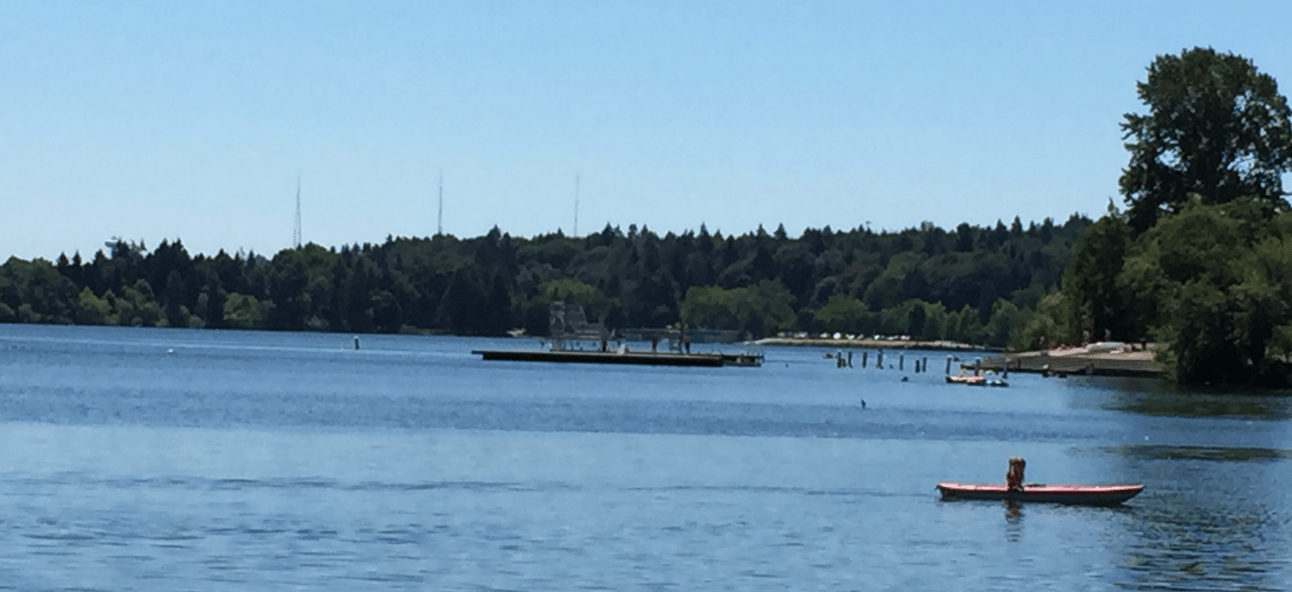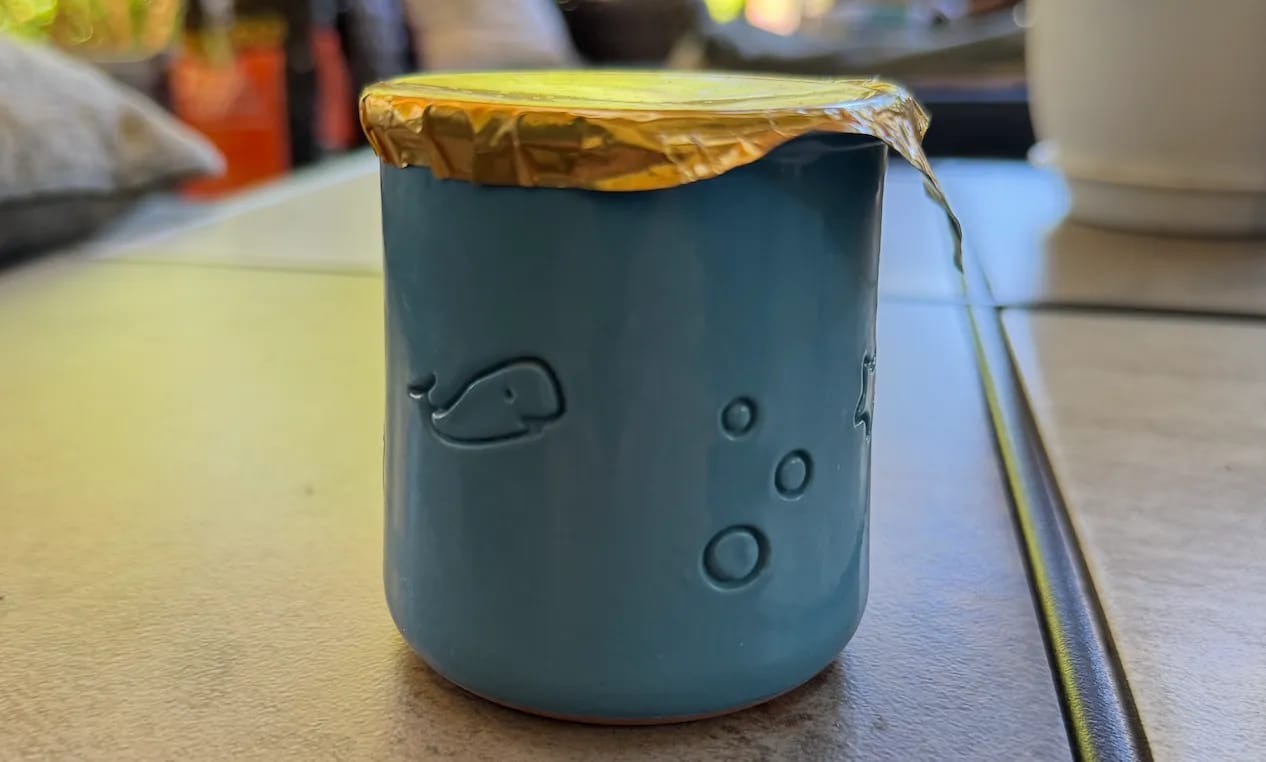The Map Is Not the Territory
On why I take the long way to work.
My sense of direction is terrible.
My wife has an excellent sense of direction. Plop her down in a city or forest or maze and she'll find her way. Plop me down and I'll get lost, take a wrong turn, and run straight into the Minotaur.
That's why I love Google Maps. It's my saving grace, my true north in a crazy world. Give me an address and I can Vasco da Gama my way anywhere. We all can. It's pure magic.
And I completely ignore it on my way to work.
Google Maps wants me to take I-5, briefly slog through rush hour traffic to the UW exit, then hop on a couple of arterials and boom, I'm at my job in under 12 minutes. But I almost never go that way.
Instead, I head down 5th Ave., take a right toward Green Lake, and efficiently meander along the water before picking and choosing from different arterials (or side streets) to get to work. It takes 15 to 20 minutes depending on the time of day.
My GPS would judge me for such nonsense. The map says the rational thing is to take the most direct path. Save time, save gas, get there faster. But that skips the view of the lake. It ignores the comfort of the drive, my preference for podcasts over gridlock, and the simple fact that I cannot stand starting my day in I-5 traffic. The "right" way is absolutely wrong for me.
In short, the map is not the territory. So this week, let's talk about this powerful mental model, what happens when we rely too heavily on pure logic and optimization, and how you can navigate life by understanding the difference between what looks efficient and what actually works.
Understanding the Territory
"The map is not the territory" was coined by the Polish-American philosopher and engineer Alfred Korzybski, who spent his life thinking about how we think. Which as an aside is a pretty amazing way to spend your time on this earth. His point was simple but profound: our representations of reality are not reality itself. I know we know that, but I think a lot of the time we forget that we know that. Maps, models, algorithms, spreadsheets, best practices are all useful, but they leave a bunch of stuff out. Important stuff.
And that's by design. A map’s job is to simplify. But every simplification is also a distortion. That compression can steer us wrong if we mistake the simplification for the entire story. A spreadsheet might tell you the best candidate for a job is the one with the most experience or the lowest expected salary. But it won't show you who brings energy to a room, who listens with real curiosity, or who turns out to be the glue for a team. A school ranking might nudge you toward one district, but it won't capture the teacher who changes your kid's life or the neighbor who becomes like family.
Too often, we get so good at using these tools that we start mistaking them for the world. Optimization becomes a kind of religion. Efficiency takes the wheel. And we wake up one day realizing we're on a route that looks great on paper but feels all wrong in our gut.
How Optimization Can Optimize Away the Things That Matter
Optimization feels like progress. It’s great to make things faster, cheaper, more streamlined. We see the gains on a dashboard, in a report, in a before-and-after comparison. But optimization also can flatten complexity. It can erase the soft, unquantifiable things that make something really work.
It can be the difference between being efficient and being effective. Efficiency is about doing things right, but effectiveness is about doing the right things.
For example, I eat a lot of yogurt. Every morning, in fact. At the end of the day, yogurt is yogurt, it largely tastes the same. But my preferred brand is Tillamook Greek Yogurt. And sure, I like the taste, but truth be told, I had to train myself to like yogurt in the first place. Part of what tilts me toward this brand is that Tillamook comes in flavors that appeal to me, and when you peel back the foil, there's always a little message waiting like "Good things come to those who scrape” or “A little culture is good. A lot is even better.”
My wife's favorite yogurt is called La Fermière and comes in tiny clay pots like this:
It's wildly expensive (for yogurt).
We could both buy much cheaper yogurt in bulk. The rational choice would be to optimize for cost per ounce or protein per dollar. But we don't.
We choose based on things that don't show up in nutritional comparisons or price-per-unit calculations. I like the silly little messages and the variety of flavors. She also likes the taste and texture and reusing the mini pots for all sorts of things. These preferences completely override the logical choice, and we're better off for it.
The problem is, the things we actually care about (the daily smile from a silly message, the quiet satisfaction of repurposing a beautiful little pot ) don't fit neatly into spreadsheets or efficiency models. So when organizations try to optimize, they end up optimizing for what's easy to measure, not what actually matters.
And then best practices get built around narrow problems or borrowed from entirely different contexts altogether. What worked brilliantly for one team, one company, one school district might land with a dull thud somewhere else. Especially if it's followed dogmatically. Especially if no one pauses to ask whether the original assumptions still apply.
You see this in hiring, product development, even parenting. Logic pulls us toward safe, repeatable decisions. But some of the best outcomes come from trusting a hunch, deviating from the script, choosing the thing that feels right…even when the math doesn’t math.
And there’s the rub. The most logical path often ignores the things that matter most: trust, intuition, culture, joy. You can’t optimize for those because you can’t easily measure them. But that doesn’t make them any less essential.
The Art of Productive Inefficiency
Okay, you might be wondering: so when do I trust the map, and when do I ignore it? It's a fair question, and like most good questions, the answer is "it depends."
Here's a practical framework for navigating the difference:
When to trust the map:
High stakes, time-sensitive situations (rushing to the hospital, catching a flight)
Tasks where efficiency genuinely matters most
Areas where you lack experience and need reliable guidance
When the metrics being optimized actually align with what you care about
When to question the map:
Following it feels wrong in your gut, even if you can't explain why
It optimizes for metrics that don't align with your actual goals or values
The "best practice" comes from a completely different context than yours
It eliminates things you enjoy or value, even if they seem "inefficient"
Questions to ask yourself:
What am I actually optimizing for? Time, money, joy, meaning, relationships?
Whose definition of success am I using? Mine or someone else's?
What gets lost if I follow this advice perfectly?
What would I choose if no one was measuring?
I think it is important to intentionally leave room for the unmeasurable. Leave buffer time for the scenic route, both literally and metaphorically. Protect space for conversations that run longer than scheduled. Choose tools and processes that bring you small daily joys, even if they're not the most efficient option. Trust your instincts when they conflict with the data, especially when the stakes aren't life-or-death.
Take the Scenic Route
Just because something makes sense doesn't mean it works. And a lot of things that work great don't make any sense at all.
The world loves a clean model, a five-point plan, a perfect route. But the best parts of life are often messy, nonlinear, and impossible to replicate. They don't show up in your weekly reports or your morning commute time. They show up in how you feel when you get there. In what you remember years later.
So yes, use the map. Know the tools. Understand the metrics. But don't hand over the wheel. The trick is knowing when to trust the map and when to throw it out the window. Sometimes you need the direct route of I-5. Sometimes you need the view from Green Lake. The wisdom is in the choosing.
Because maybe that five-minute detour is where the magic is. And don't we all need a little more magic in our lives?
Ever forward.
— Derek (aka Chief Rabbit)
Enjoying Chief Rabbit?
This newsletter is free and always will be. But if you’d like to support this work, you can. You’ll get monthly Q&As, vote on topics, stickers, and help keep this ad-free.
You can also follow me on Threads where I sound off on all sorts of nonsense OR LinkedIn where I tend to be a touch more serious.
Also, thanks for being someone who reads to the bottom of the page, you’re a special human.




